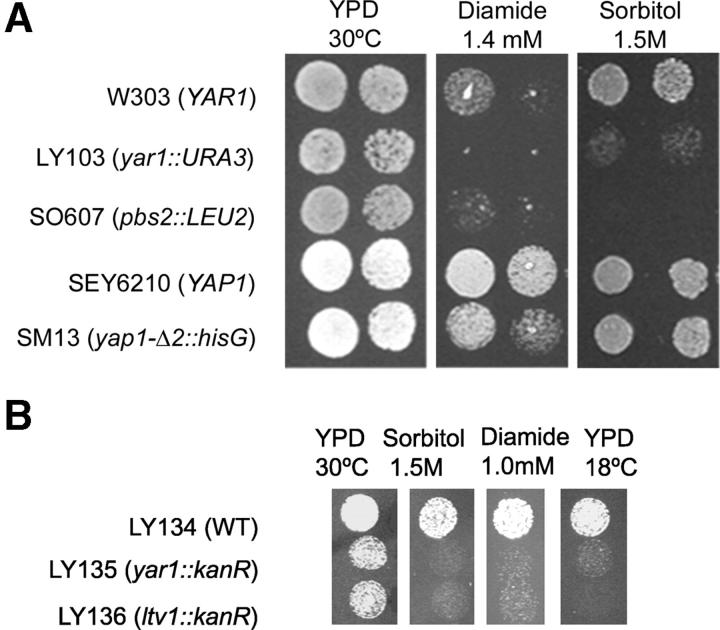Figure 3.—
Δyar1 strains and Δltv1 cells exhibit stress-sensitive phenotypes. (A) Wild-type parental strain W303 and isogenic deletion derivatives Δyar1::URA3 and Δpbs::LEU2 were grown to midlog phase in YPD media, as were parental strain SEY6210 and its isogenic deletion derivative, Δyap1-Δ2. Cell density was determined by hemocytometer and 5-μl aliquots containing 16,000 (left) and 4000 (right) cells were spotted onto YPD or YPD plus the indicated drugs. In this experiment, 1.3 times more Δyar1 and Δpbs2 cells were spotted at each position compared to the other strains to compensate for the slightly slower growth rate of these mutants under nonstress conditions. Plates were incubated at 30° and photographed after 2 days. The W303 strain background is more sensitive than the SEY6210 strain to diamide. (B) Parental strain LY134 (derived from S288c) and isogenic deletion derivatives LY135 and LY136 were grown as in A. Equal numbers of wild-type and mutant cells were spotted at each position. All plates were photographed after 2 days at 30° except the 18° plate, which was photographed after 3 days of incubation.

